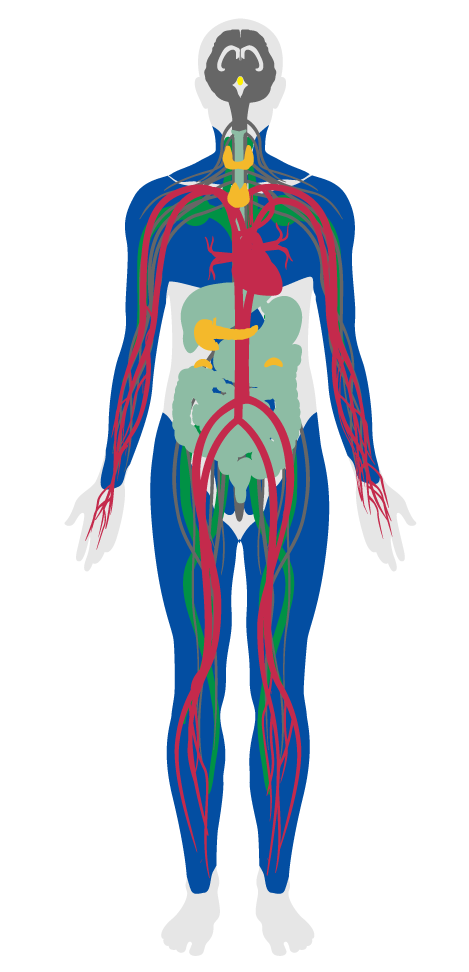Circadian lighting design
- 53 Visual lighting design
- 54 Circadian lighting design
- 55 Electric light glare control
- 56 Solar glare control
- 57 Low-glare workstation design
- 58 Color quality
- 59 Surface design
- 60 Automated shading and dimming controls
- 61 Right to light
- 62 Daylight modeling
- 63 Daylighting fenestration
- P2 Light at night
- P3 Circadian emulation
Circadian lighting design
To support circadian health by setting a minimum threshold for daytime light intensity.
BACKGROUND
Light is one of the main drivers of the circadian system, which starts in the brain and regulates physiological rhythms throughout the body’s tissues and organs, affecting hormone levels and the sleep-wake cycle. Circadian rhythms are kept in sync by various cues, including light which the body responds to in a way facilitated by intrinsically photosensitive retinal ganglion cells (ipRGCs): the eyes’ non-image- forming photoreceptors. Through ipRGCs, lights of high frequency and intensity promote alertness, while the lack of this stimulus signals the body to reduce energy expenditure and prepare for rest. The biological effects of light on humans can be measured in Equivalent Melanopic Lux (EML), a proposed alternate metric that is weighted to the ipRGCs instead of to the cones, which is the case with traditional lux. During Performance Verification, EML is measured on the vertical plane at eye level of the occupant. Tables L1 and L2 in Appendix C show how to calculate the EML of individual lamps and larger spaces.

